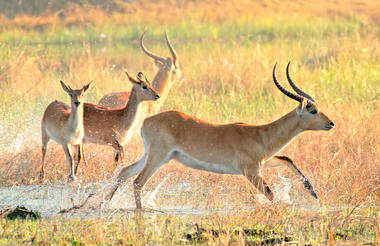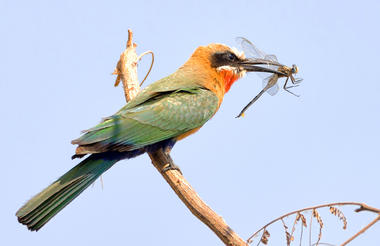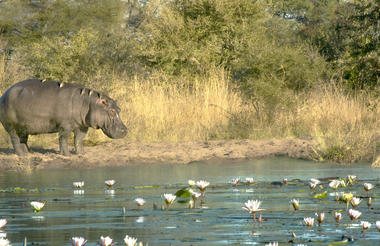Situata nell'Africa sudoccidentale, la Namibia vanta un'infrastruttura ben sviluppata, alcune delle migliori strutture turistiche in Africa e un'impressionante lista di meraviglie naturali mozzafiato. I visitatori possono esplorare la capitale di Windhoek e scoprire la bella città costiera di Swakopmund che vanta resti dell'influenza tedesca del paese, che si riflettono nell'architettura, nella cultura, nella cucina e nelle celebrazioni annuali dell'Oktoberfest. Per apprezzare correttamente questo straordinario paese, dovrai avventurarti fuori dalle città per esplorare i meravigliosi paesaggi naturali che la Namibia ha da offrire. Questi includono: l'imponente Fish River Canyon, il vasto parco nazionale di Etosha ricco di fauna selvatica, come leoni, elefanti adattati al deserto e la Zebra montana di Hartmann; il meraviglioso deserto di Kalahari; e naturalmente il deserto del Namib che si estende per oltre 2000 km lungo il magnifico Costa Atlantica. La Namibia è una destinazione ideale per i viaggiatori che cercano un'esperienza africana indimenticabile in una natura selvaggia e selvaggia.
Con una superficie di 172.200 ettari e comprende quattro ecosistemi distinti, la NamiBrand Reserve della Namibia meridionale è tra i più grandi parchi di gioco di proprietà privata dell'Africa meridionale. Fondato per preservare l'ambiente unico e le specie selvatiche del deserto del Namib, il mix di dune, montagne, affioramenti rocciosi, pianure sabbiose e pianure ghiaiose offre habitat per una varietà di mammiferi, tra cui iene, sciacalli, volpi, antilopi e vari gatti selvatici. Una pletora di specie di uccelli, rettili, insetti e rane hanno anche la loro casa, accanto a una serie di specie vegetali. Scopri i misteriosi «cerchi delle fate», le macchie nude inspiegabili nella sabbia o goditi una notte di sublime osservazione delle stelle - essendo stata nominata la prima International Dark Sky Reserve dell'Africa, è una delle aree meno inquinate dalla luce al mondo.
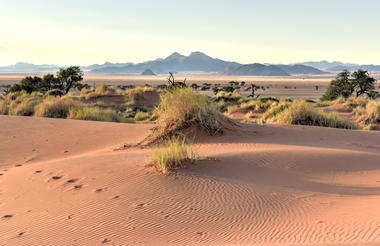
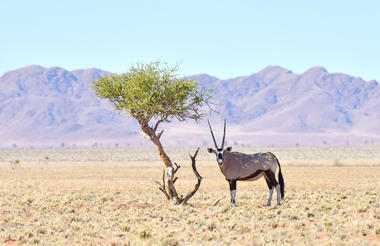
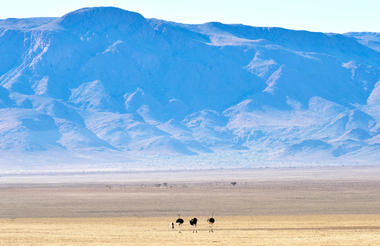
Dove Kaokoland incontra la Skeleton Coast, nella Namibia occidentale, il fiume Hoanib, lungo 270 chilometri, è una delle ultime oasi acquatiche del paese, fornendo un rifugio per numerosi animali. Ospita il 75% delle specie endemiche della Namibia, tra cui il maggior numero di elefanti, leoni e rinoceronti adattati al deserto che vagano liberamente nel mondo, così come zebre, kudu e giraffe, questo è un posto davvero eccezionale e maestoso. I visitatori possono godersi un meraviglioso percorso a quattro ruote motrici, percorrere avventurosi sentieri escursionistici, correre lungo enormi dune di sabbia o arrampicarsi su massicce formazioni rocciose dalla forma strana e diverse passeggiate guidate nella natura.
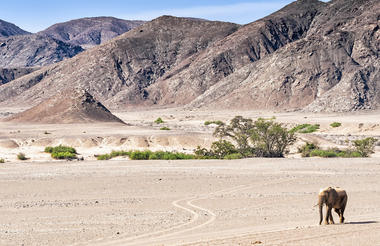
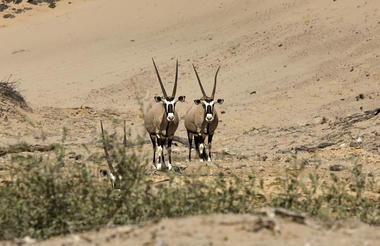
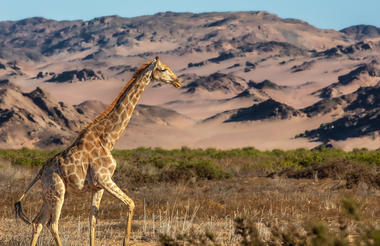
Si estende dal fiume Swakop al sud dell'Angola, la Skeleton Coast della Namibia è conosciuta come il «Land God Made in Anger». Migliaia di miglia di deserto sabbioso punteggiato di naufragi si incontrano con le fredde acque dell'Atlantico, dove la nebbia oceanica si insinua sul litorale. In qualche modo, una straordinaria varietà di fauna selvatica e flora riesce a sopravvivere in questo ambiente duro ma bellissimo. Gli animali che vivono qui includono colonie di uccelli marini, foche di pelliccia del Capo, zebre, gemsbok, elefanti adattati al deserto, leoni e molti altri. Gli appassionati di surf sono attratti dalle potenti onde che si infrangono e i fotografi si affollano da tutto il mondo per fotografare gli inquietanti cimiteri del naufragio e la costa mozzafiato.
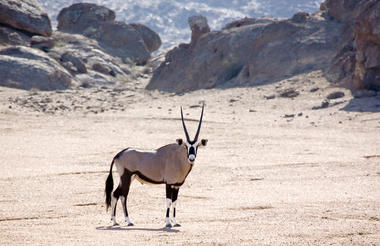
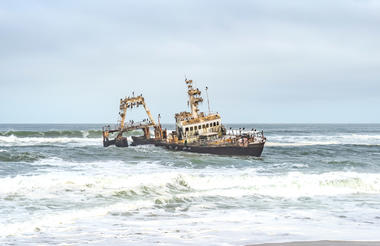
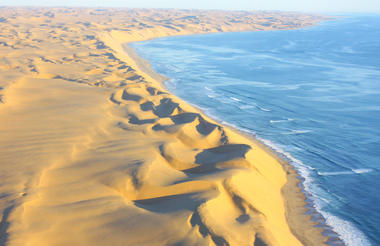
Incredibilmente remota, la valle di Hartmann è un paesaggio lunare desolato ma affascinante di sabbia e roccia. Situata nell'estremo nord-ovest della Namibia, la regione offre un profondo senso di natura selvaggia e un'insolita giustapposizione di habitat, poiché il fiume Kunene nutre una fascia di vegetazione lussureggiante in mezzo a uno dei deserti più aridi della terra, mentre le nebbie marine si insinuano dalla costa, e le onde su ondate di dune invitano a essere scivolò verso il basso. La valle ospita gli Himba, uno degli ultimi veri nomadi in Africa.
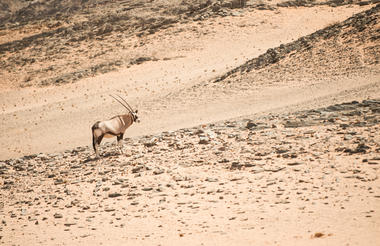
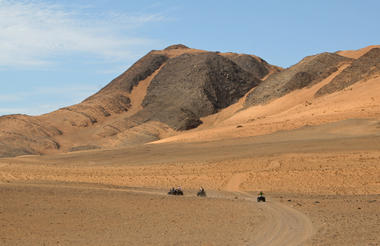
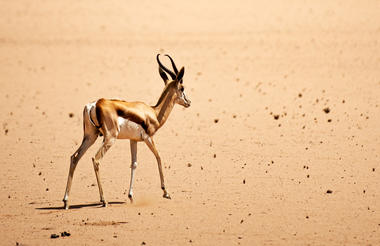
Situato nella parte nord-occidentale della Namibia, l'Etosha East è un santuario protetto nella parte orientale del famoso Parco Nazionale di Etosha, noto come una delle riserve faunistiche più accessibili dell'Africa meridionale. Etosha East vanta vaste pianure aperte cosparse di praterie semi-aride disseminate di pozze d'acqua. L'imponente salina Etosha di 5000 chilometri quadrati costituisce una vasta area del lato orientale del parco ed è visibile anche dallo spazio. Questa remota area pullula di una ricca fauna selvatica come leoni, elefanti, rinoceronti neri e giraffe, oltre a una varietà di uccelli con fenicotteri, struzzi, aquile, buceri e gufi.


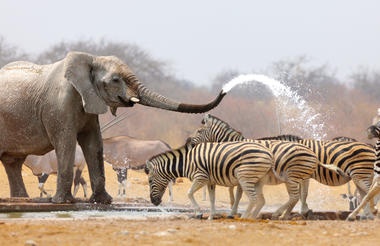
Attraversando la spettacolare striscia di Caprivi nel nord-ovest della Namibia, il fiume Kwando sorge dagli altopiani dell'Angola centrale che formano il confine tra Namibia, Zambia e Angola. L'area che circonda il fiume Kwando è nota per le sue riserve di caccia protette, i parchi nazionali e i santuari della fauna selvatica. Offre un'eccellente visione degli animali selvatici con le acque perenni del fiume che attirano una ricca fauna, tra cui grandi mandrie di elefanti, ippopotami, coccodrilli, lechwe rosso, tartarughe, zebre, impala, lontre dal collo maculato e oltre 400 specie di uccelli. I visitatori possono godersi un soggiorno rilassante in uno dei numerosi lodge situati sulle rive del fiume e godersi le viste spettacolari dell'Africa selvaggia. Le attività più popolari includono: osservazione del gioco, birdwatching, pesca e campeggio.
